Greg O’s Garage: The 1930 Motor Parkway license plate/season ticket holders Part I
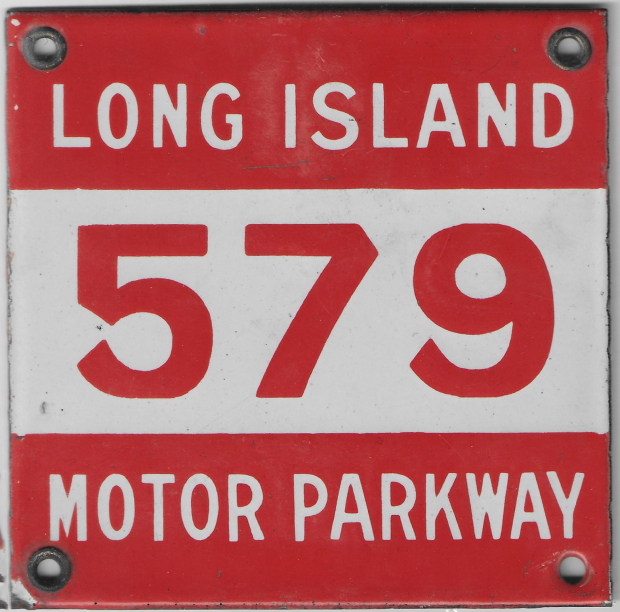
The Suffolk County Vanderbilt Museum has forwarded lists of people who purchased Long Island Motor Parkway season tickets and license plates over an eight-year period (1913, 1914, 1915, 1916, 1917 1930, 1931 and 1932.) These " Who's Who" lists total over 700 prominent Long Islanders.
In part 1 of this new series, I have profiled several of the well-known Long Islanders who travelled to their summer estates and homes in 1930,
Greg O.
1930 List of Motor Parkway season ticket holders/Motor Parkway license plates
It is notable that the Motor Parkway had two lists of numbers. One list was for 'Season Ticket' holders who simply presented their season ticket at the toll lodge, and the second list were numbers represented by their enamel, 5"x5" plates affixed to the front of their vehicles. It is unclear at the moment if the list uncovered by the Vanderbilt Museum is a season ticket list, or the list of parkway plates. Either way, it's an impressive list of the extremely wealthy notable men and women on Long Island in 1930. Can you spot any other prominent Long Islanders in this 1930 list?
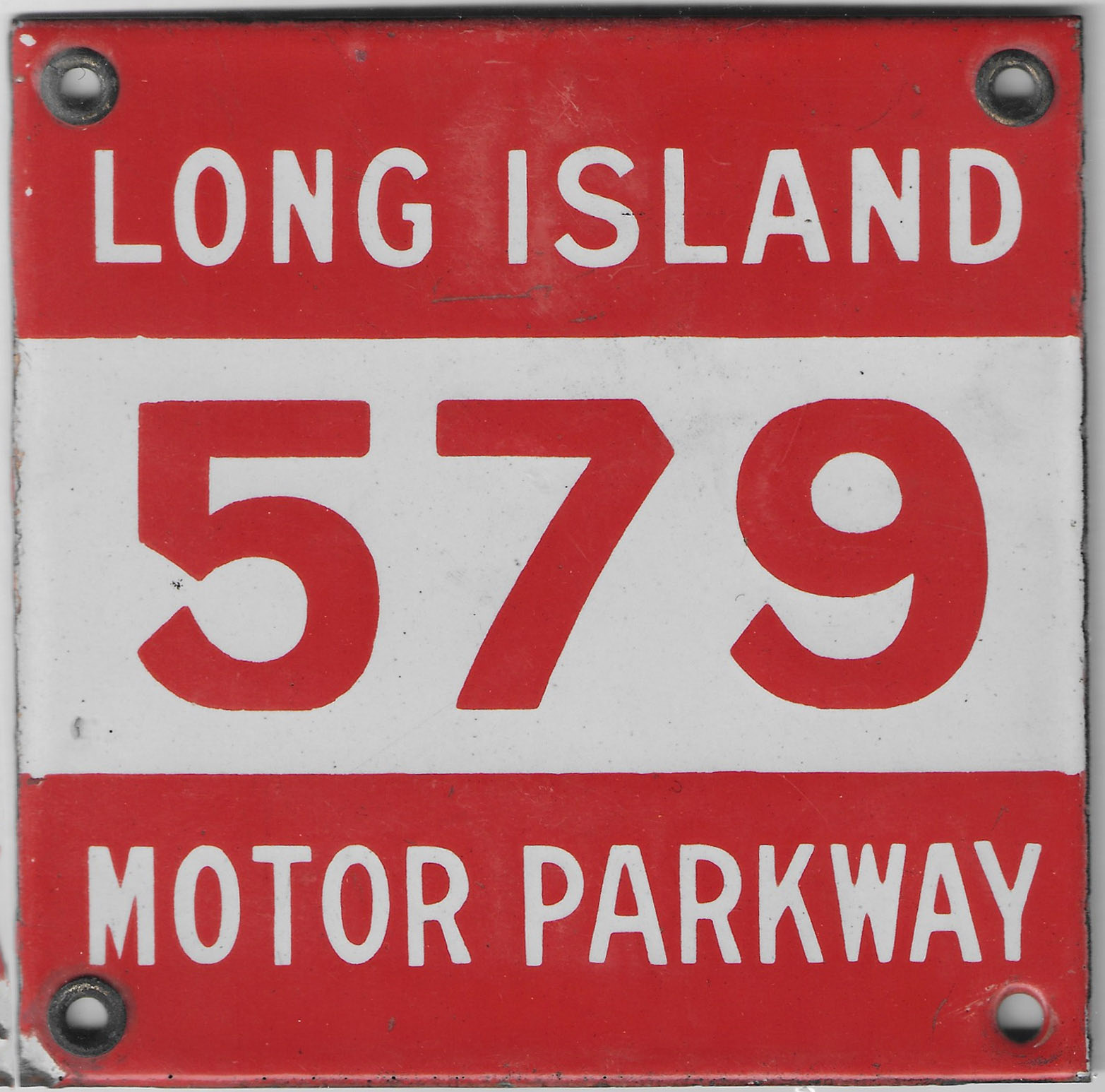
According to the Vanderbilt Museum archives, 1930 plate # 579 was purchased by Juliet Ausborn.
Profiles of Prominent 1930 Motor Parkway Season Ticket/ Plate Holders
#165, 166 William Russel Grace, Jr.
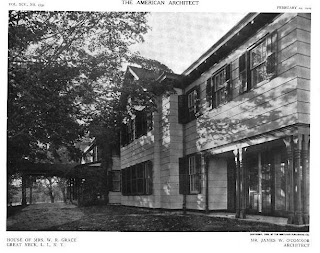
The list we are looking at was the compilation of 1930 Long Island Motor Parkway patrons. Number 165 and 166 were listed as 'W Russell Grace'. However, there was a senior and junior W Russel Grace by this time. William R. Grace Sr. passed away in 1904, so it stands to reason that the Grace in question was his son, W. Russell Grace Jr.
Despite this, 'Gracefield', the home of his mother, Mrs. William Russell Grace Sr., was designed by James O'Connor circa 1909 in Great Neck and was nothing short of spectacular and worthy of a mention here.
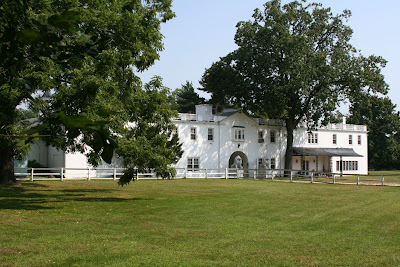
W. Russell Grace Sr. (1832-1904) was a two-term mayor of New York City and co-founder of cargo shipping company William R. Grace & Co.
His son W.R. Grace Jr. (1878-1943) resided at 'Crossroads' in Old Westbury. W.R. Grace Jr. was a director at W.R. Grace & Co. and was also vice-president of Ingersoll-Rand.The neo-federal 'Crossroads' was also designed by James O'Connor circa 1919 and still stands today in Old Westbury off Wheatley Road..
#180, 181, 182 William Robertson Coe
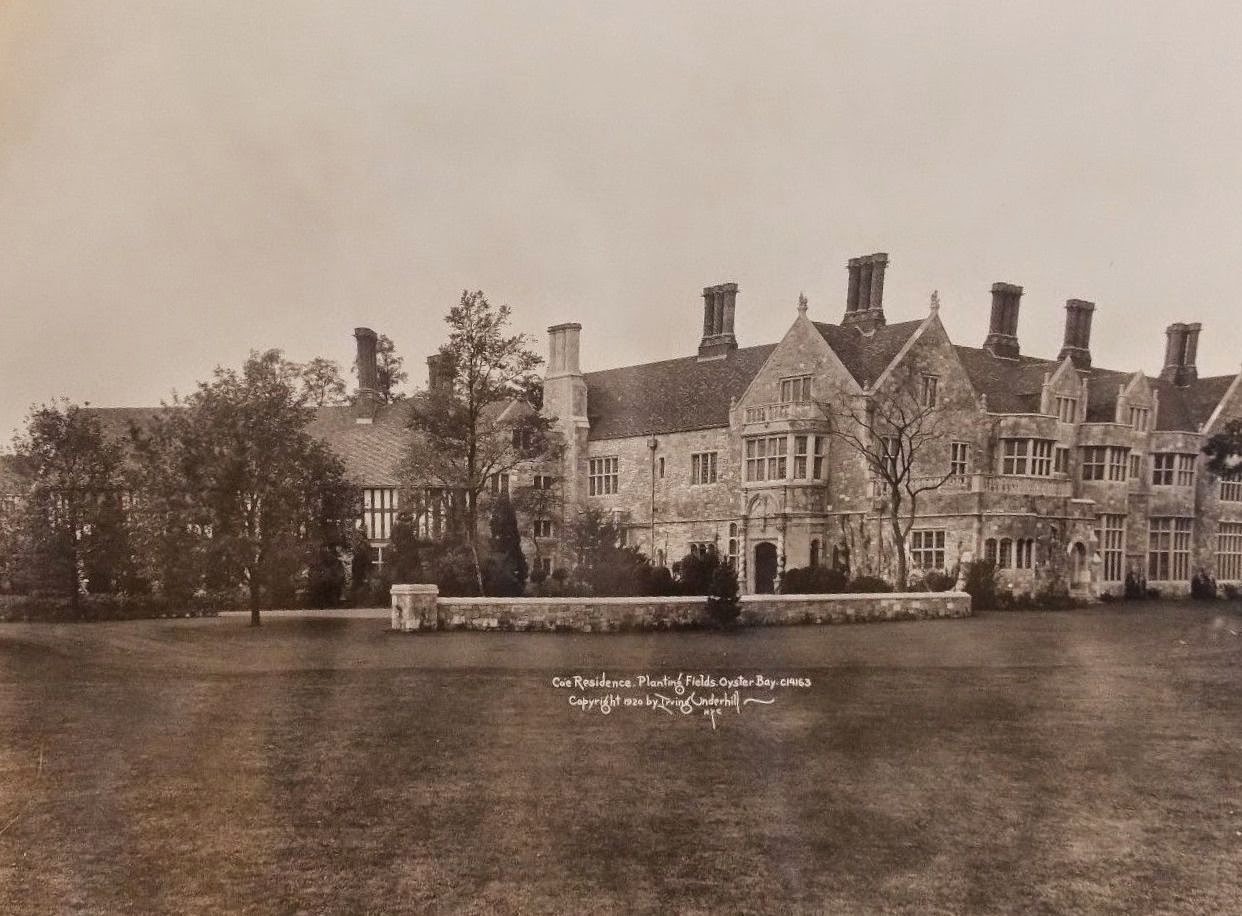
Born in Kingswinford, Staffordshire, England, numbers 180, 181, and 182 belonged to William Robertson Coe.
William Robertson Coe (June 8, 1869 – March 15, 1955) was an insurance, railroad and business executive, a major owner and breeder of Thoroughbred racehorses, as well as a collector of Americana and an important philanthropist for the academic discipline of American Studies.
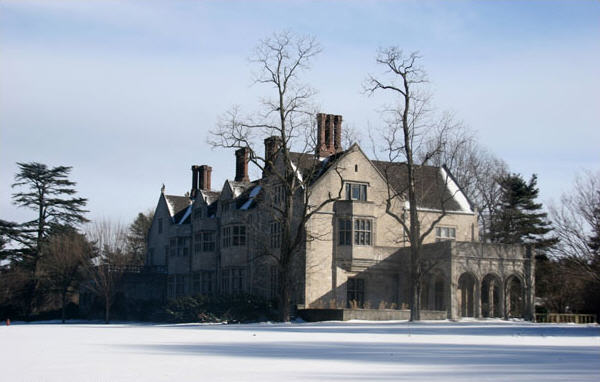
Designed by Walker & Gillette circa 1919, Coe's Planting Fields in Upper Brookville is the 101st largest home ever built and a botanical wonder. Planting Fields, or Coe Hall, still survives today as a statement about art, architecture, and landscape.
#232, 233 Nicholas F. Brady
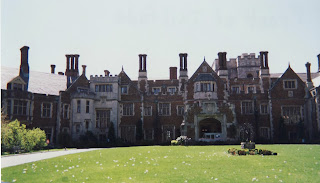
Fifteenth largest home ever built in the United States, 'Inisfada' in North Hills, was the lavish home belonging to Nicholas F. Brady and his wife, Genevieve Brady.
Nicholas Brady was Chairman of the board of directors of New York Edison Co. and a director of Anaconda Copper Mining Co., Westinghouse Electric, National City Bank, Union Carbide, and numerous other companies in the United States and Japan whose activities were primarily in utilities.
Designed by noted Philadelphia architect John T. Windrim, the 300 acre, 87 room mansion was built from 1916 to 1920 at a cost of over $2 million (About $30,000,000 adjusted to 2022 dollars)
The name Inisfada is Gaelic for "Long Island".
#261, 262 Otto Hermann Kahn
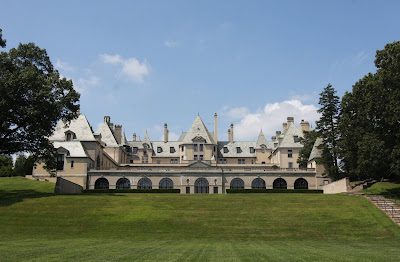
Second only to George Washington Vanderbilt's 'Biltmore' in Asheville, North Carolina of largest homes ever built in the U.S., Otto Kahn's OHEKA Castle is the largest home on this list.
Otto Hermann Kahn (February 21, 1867 – March 29, 1934) was a German-born American investment banker, collector, philanthropist, and patron of the arts and his home reflected his immense wealth. OHEKA, the name derived from the first letters of Kahn's name, still stands today as a premier hotel and catering facility.
Fun fact; Otto Kahn was the inspiration for Monopoly's Rich Uncle Pennybags character.
Also on the list, plates numbered 268 & 269 belonged to Otto Kahn's accomplished Jazz musician and Aviator son, Roger Wolfe Kahn.
#224, 225 John W. Mackay

Son of Clarence H. Mackay, owner of 'Harbor Hill' in Roslyn, (examined in a later post), numbers 224 & 225 were attributed to John Mackay lll who had constructed 'Happy House' by the architectural firm Cross & Cross in 1929 adjacent to Harbor Hill on the east side of Glen Cove Road.
Happy House was recently saved from the wrecking ball thanks to the efforts of Mayor Michael Koblenz and the Roslyn Landmark Society and still stands today.
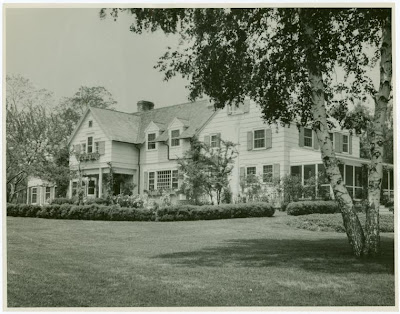
In 1957, John Mackay moved to 'Matinecock Farm', built in 1678 in sleepy Lattingtown by John Underhill Jr.
Part 2 will continue with this incredible list of names frequently seen on the Motor Parkway in 1930.

Comments
My dad bought this Bugatti from a owner of a garage in Massachusetts. Apparently Otto Kahn’s son had ignored the storage costs of this car and my dad bought it for only 500$. Unfortunately he loaned it to a friend while he was involved with WW2. When he came back his friend told him that the car was destroyed in a hurricane . Easy come easy go.
I spot a number of well-known Long Islanders. Here’s one of them - Frank Gulden. My Grandmother, Mary Ryder, worked for the Gulden (Mustard) family; Frank Gulden (1878-1961), lived at 111 Hilton Ave, Hempstead in 1925, w/wife & 4 children; in 1930 was Pres. w/son Frank, Jr. as VP of Gulden’s Mustard; Company started c.1862 by Charles Gulden (1843-1916), Frank’s father.
Extensive and interesting list Greg, nice work!
Greg, There were two categories of plate holders. The Season Ticket purchasers and the Official Pass receivers. This group did not pay to use the Parkway, they included political figures, Police officials, Fire Chiefs, etc. Remember, the Parkway ran thru several different municipal jurisdictions.
Toll collectors could tell who was who because of the numbering system. For example, in 1928 plates numbered between 1000-2000 were reserved for Pass holders and in 1929 Pass holders received plates numbered between 700 and 900. I member seeing at least one list at the Vanderbilt Museum headed pass holders Hope this helps.
That’s great Gary! Didn’t know the Guldens were Long Islanders. My only claim to fame is growing up friends with the Fox family in Great Neck. They were responsible for Fox’s U-Bet.
The Bugatti was stored in a garage near the water in Stony Brook in 1944 and was flooded by that years hurricane. It was red. The friend was in the army and when he came home was told the car was scrapped due to the flooding.
Greg, To make things a little clearer regarding the Season Ticket purchase. The term is a little misleading as it was good for a given calendar year. For most of the Parkway’s existence the cost of such a ticket was around $50.00. The purchaser received a small paper ticket and one plate. If an addition plate was requested ( with the same number) it cost the buyer an additional 25 cents.
Wow! 50$ in 1930 is equivalent to about 833$ today. Al, I’m assuming the paper ticket was proof of purchase and kept in the vehicle at all times. Please clarify. Any photos available of such paper ticket? Great details as always, thanks!
This is great! A lot of prominent figures of the time.
The fundamental problem with LIMP is it was part of a massive one upping contest (by the Vanderbilt grandchildren) that squandered the Vanderbilt fortune that Cornelius and William Henry worked so hard to create. Massive disrespect to their sacrifices.
Yet this is a topic rarely discussed—how come?
Frank, There is a picture of a Parkway paper season ticket in the Spring 2000 issue of Long Island Forum magazine. Your library most likely has a copy in their reference section.
Eric, My spin on your one upping comment is that it started with Alva Vanderbilt, Willie’s mother.
Eric,
Al, as always, is correct. Willie K’s mother Alva, had an insatiable will to build extravagant estates and was to a certain degree, the beginning of the end. By that time, the later generations were better at spending the fortunes of the Commodore and William Henry, rather than working hard to maintain it. Willie K, and the rest of the 4th+ generations simply furthered the spending spree watering it down to next to nothing today. The preface of the book, ‘William K. Vanderbilt ll A Biography’ written by former Vanderbilt Museum President Steven Gittelman gives a little insight to this.
Greg, Willie wasn’t a reckless spender. In fact he lived well within his means. He didn’t have “real money” until his father died in 1920 receiving an inheritance of $20,000,000 plus dollars. In 1931, during the Great Depression, he took deliver of the yacht Alva, I believe it was the largest yacht in the world at the time… and promptly went on a seven month cruise around the world. He died in 1944 leaving an estate of more than $36, 000,000. Let’s do the math. $20,000,000 in 1920… $36,000,000 in 1944, living the high life in between… The next generation didn’t fare that well because the inheritance tax at the time was 90% .... thats not a typo.
I was surprised to see on this list a Jerome Trepel. I believe he was a cousin of my grandfather’s. My grandfather and all four of his brothers were florists in Brooklyn and Manhattan from late 1800’s to 1960’s. I think Jerome was also a florist out on Long Island.